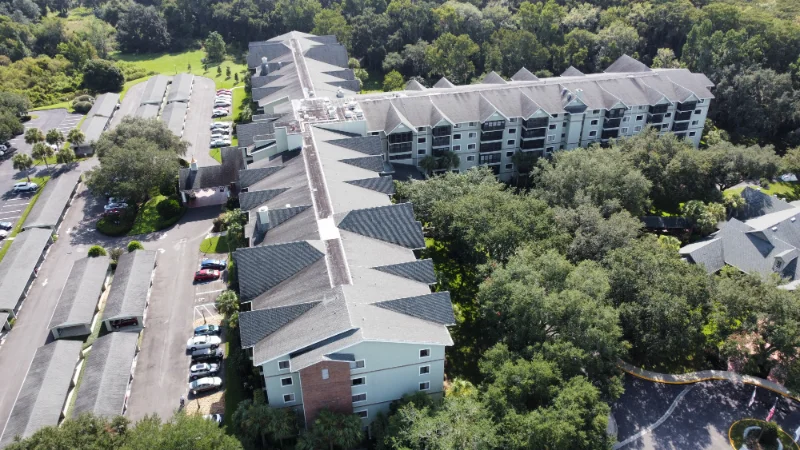The Nuts & Bolts of Lightning Protection
How Lightning Enters
A single bolt of lightning can carry over 30 million volts of electricity.
A direct strike to a structure can rip through roofs and chimneys, explode brick and concrete and ignite fires.
An indirect or secondary lightning strike to a nearby tree or power line can induce unwanted surges into a home.
Lightning can also enter through phone, cable lines and computer modems, as well as roof projections such as weathervanes, antennas and satellite dishes.
Home extras like irrigation systems, invisible fences and electric gates can provide a low-resistance pathway for lightning’s destructive energy.
Prevent loss from Lightning damage.
Every year thousands of properties are damaged or destroyed by lightning. In the US, Lightning accounts for more than $1billion in annual structural damage.
Increase Safety, minimize risk, protect from liability.
Only UL Listed Lightning Protection
Installers can deliver a lightning protection system carrying a UL Master Label Inspection Certificate, and provide:
- Minimized risk of significant property damage caused by lightning strikes
- Protection from liability, downtime and loss of business in the event of lightning damage
- Peace of mind that the system bearing a UL Inspection Certificate has been rigorously inspected to provide maximum protection for the structure or building
- A demonstrable commitment to safety to insurers, local inspectors and commercial tenants
- Tools to make informed choices when selecting equipment and an installer
Some manufacturers and installers simply self-declare that their lightning protection systems comply with national standards, making it difficult to determine if systems truly comply, are installed properly, or perform as claimed. Purchasing a lightning protection system carrying a UL Master Label Inspection Certificate ensures safety, protection, and peace of mind.
Designing and planning a lightning protection system
Studies by the American Geophysical Union confirm that conventional lightning protection systems are highly effective in reducing lightning-caused fires and damage to buildings and structures.
Specifying compliance with UL 96A or NFPA 780 (National Fire Protection Association) standards is key to safe and effective lightning system performance.
Lightning protection systems that have received the UL Inspection Certificate comply with national standards and include all of the following specified components:
- Network of rooftop air terminals that provide a complete zone of protection
- Network of low impedance grounding terminations
- Network of conductors interconnecting the air terminals and grounds
- Interconnections with metallic bodies that provide equipotential bonding
- Lightning protection surge protection devices on all incoming services
A lightning rod or lightning conductor (British English) is a metal rod mounted on a structure and intended to protect the structure from a lightning strike. If lightning hits the structure, it is most likely to strike the rod and be conducted to ground through a wire, rather than passing through the structure, where it could start a fire or cause electrocution. Lightning rods are also called finials, air terminals, or strike termination devices.
In a lightning protection system, a lightning rod is a single component of the system. The lightning rod requires a connection to the earth to perform its protective function. Lightning rods come in many different forms, including hollow, solid, pointed, rounded, flat strips, or even bristle brush-like. The main attribute common to all lightning rods is that they are all made of conductive materials, such as copper and aluminum. Copper and its alloys are the most common materials used in lightning protection.[1]
Rounded versus pointed ends
The optimal shape for the tip of a lightning rod has been controversial since the 18th century. During the period of political confrontation between Britain and its American colonies, British scientists maintained that a lightning rod should have a ball on its end, while American scientists maintained that there should be a point. As of 2003, the controversy had not been completely resolved.[23] It is difficult to resolve the controversy because proper controlled experiments are nearly impossible, but work performed by Charles B. Moore, et al.,[24] in 2000 has shed some light on the issue, finding that moderately rounded or blunt-tipped lightning rods act as marginally better strike receptors. As a result, round-tipped rods are installed on most new systems in the United States, though most existing systems still have pointed rods. According to the study, Calculations of the relative strengths of the electric fields above similarly exposed sharp and blunt rods show that while the fields are much stronger at the tip of a sharp rod prior to any emissions, they decrease more rapidly with distance. As a result, at a few centimeters above the tip of a 20-mm-diameter blunt rod, the strength of the field is greater than over an otherwise similar, sharper rod of the same height. Since the field strength at the tip of a sharpened rod tends to be limited by the easy formation of ions in the surrounding air, the field strengths over blunt rods can be much stronger than those at distances greater than 1 cm over sharper ones.
The results of this study suggest that moderately blunt metal rods (with tip height to tip radius of curvature ratios of about 680:1) are better lightning strike receptors than sharper rods or very blunt ones.
In addition, the height of the lightning protector relative to the structure to be protected and the Earth itself will have an effect.

